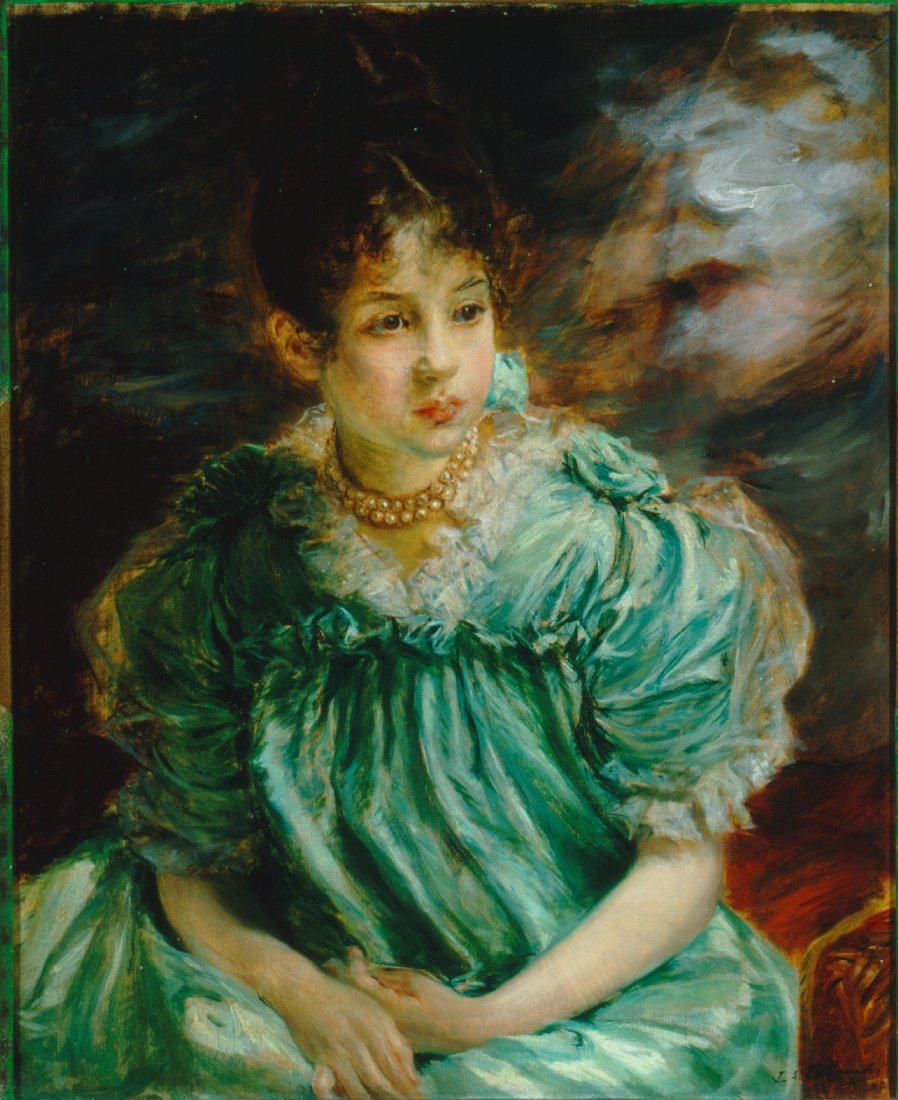Description:
Jacques-Emile Blanche (1861-1942) came from a family of doctors, his parents and grandparents were well-known psychiatrists. At the age of 19 he decided to become a painter and although he did not finish any art school he was educated alongside Henri Gervex, who gave him private artistic advice. He introduced him to the circle of such creators as Degas, Rodin, Whistler and Besnard. At the same time, he moved in the company of writers Oscar Wilde and Marcel Proust. Due to his origin, he moved in the circles of educated social classes, which he often portrayed. His favorite models were Desirée Manfred, Lucie Esnault and Wanda Zielińska * (in her adult life she became a talented violinist and cellist). The latter one was painted in 1889-1896, the result of which is approx. 16 paintings with her image **, including “Study of a Girl (in a Green Dress)” from 1894.
Description of the painting:
The girl has been captured in a sitting position to her knees, on which her hands rest, placed one in front of the other. The arrangement of arms creates a closed shape fitting into a circle, despite the lack of intertwined fingers. She turns her face to the left and freezes in a distinguished pose, staring at an unknown point to us. Her black, loced hair falls on her forehead, tied up in a high bun, which combined with the dark background frames her pale figure. The rosy cheeks and the red lipstick warm up the light-brown-eyed child’s skin. Their colour is opposed to the cold shade of the green dress with short, puffy sleeves. The edges and the finish of the triangular neckline is adorned with white, lace fabric, matching the colour of the two-rowed pearls adorning her neck. In the part of the bust, it is formed in ripples, from which the fabric flows in narrow strips towards the lower part of the composition.
The soft, childish face of the girl clearly contrasts with the adult dress, making her a fashionably dressed young lady. Additionally, the posture of a certain stiffness, careful hairstyle and make-up indicate the features of a court portrait that reached its full development in the 17th century. Its representative character was supposed to define the social position of representatives of great families and show the assumed successors. These images were made to order for royal, magnate or representatives of wealthy burghers, and since the 19th century also for the wealthy bourgeoisie.
In Blanche’s work, there are clear influences of 18th century English portrait painting in the style of Joshua Reynolds and Thomas Gainsborough, characterized by a love of light and color. The artist was also inspired by the Venetian school, which is visible in the background of the work, with a brownish, misty light pierced by streaks of broken gray, yellow and green. A similar solution can be found in Titian’s work “Rape of Proserpina” from around 1559-62. The sharp contrasts of light and shade enhance the mood of the work, which transports this realistic portrait into the realm of magical idealism.


